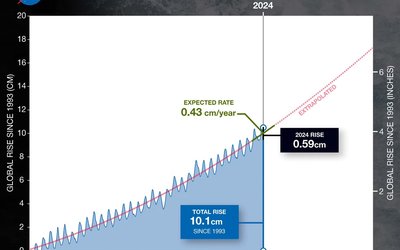Coastal erosion and coastal floods
Coastal flood risk increases much faster than previously thought
February 13, 2023

Bad news for poor coastal communities across the globe: the latest data on the elevation of coastal zones shows that the land area they live on are lower than previously thought. As a result, the likelihood of coastal flooding when the sea level rises by 1 or 2 metres, and with it the number of people exposed to coastal flooding in the next, say, 100 years, is much greater than estimates so far indicate.
Vulnerability underestimated so far
These latest data have become available from satellite measurements with improved techniques for scanning the elevation of the earth’s surface. In older data, the elevation of the land area was overestimated because the presence of vegetation and buildings distorted the picture of the land surface elevation. Developed countries such as the United States and The Netherlands do not use these data for their flood risk assessments: they use data from their own aerial missions that are more accurate than the satellite data. Developing countries, however, do not have these high quality, airborne data, and depend on satellite data instead. The latest elevation data stress that the vulnerability of coastal communities, globally, to coastal flooding has been underestimated so far. Other recent studies arrived at the same conclusion.
Less time to prepare for increasing flood risk
What’s more, the global land area that is below mean sea level increases much faster in the earlier stages of sea level rise than previously thought. This means that countries that rely on satellite data for their flood risk assessment have considerably less time left to prepare for the projected increased exposure to flooding than assumed to date. According to these latest data the additional number of people living below mean sea level under a scenario of 1 metre sea level rise is tens of millions higher than previous estimates indicated so far. For 2 metre sea level rise, the difference is over 100 million people.
One should be aware, though, that these projections apply the so-called “bathtub” approach, in which coastal water levels are projected inland across the floodplain, not considering flood defenses or other barriers. For poor communities, that often lack effective flood protection, these results are extremely relevant, however.
Source: Vernimmen and Hooijer (2023). Earth’s Future 11, e2022EF002880.








